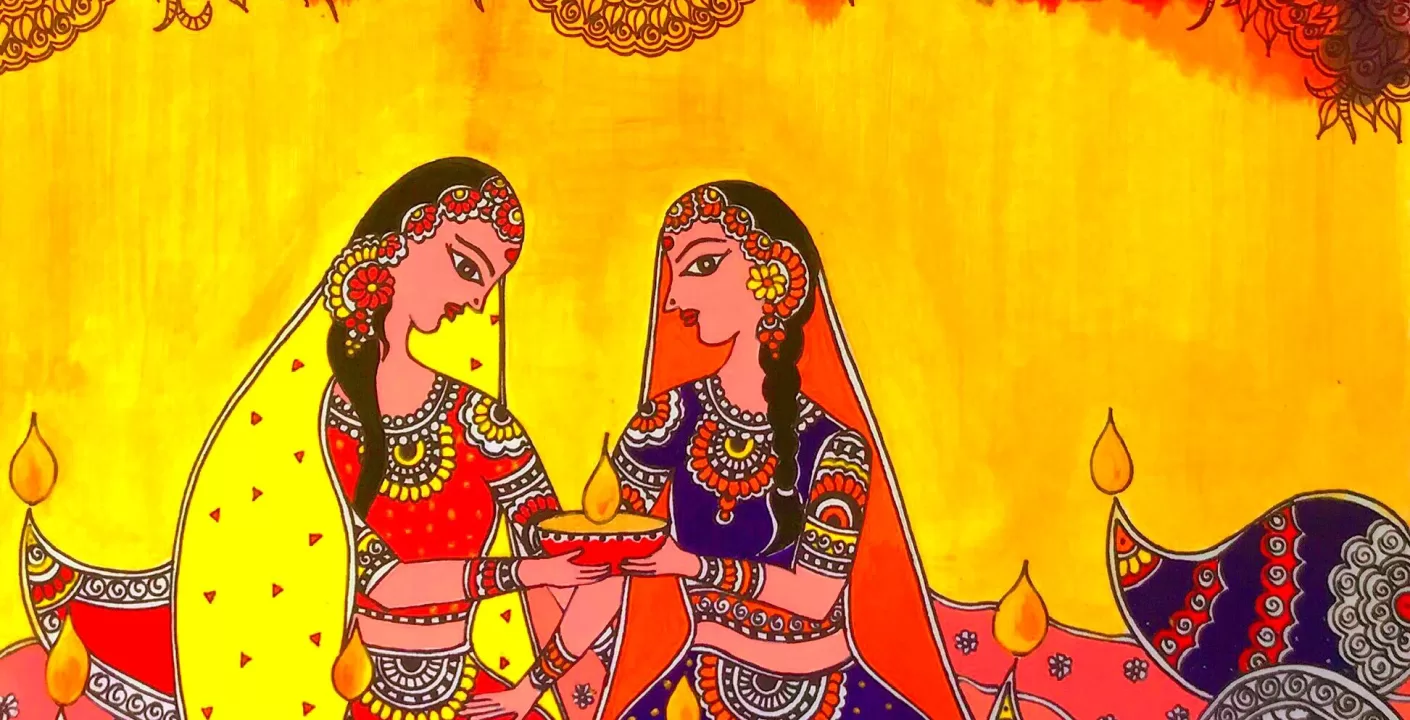
Diwali, the festival of lights, holds a special place in the hearts of millions, transcending religious and cultural boundaries. This five-day celebration symbolizes the triumph of light over darkness, good over evil, and knowledge over ignorance. In this article, we delve into the significance of Diwali, explore its diverse celebrations in different states of India, and highlight the importance of art during this joyous occasion. Join us on a journey through the colors, lights, and creativity that define the essence of Diwali.
Significance of Diwali:
Diwali is not merely a festival; it is a celebration of spirituality, family, and community. The stories and legends associated with Diwali, from the return of Lord Rama to the defeat of the demon Narakasura by Lord Krishna, underscore the triumph of good over evil. The lighting of lamps, candles, and fireworks symbolizes the dispelling of darkness and the victory of light. Beyond religious connotations, Diwali is a time for families to come together, strengthen bonds, and spread joy.
Celebrations Across Different States:
North India:
In the north, Diwali is marked by the worship of Goddess Lakshmi and the grandeur of lighting earthen lamps. Families burst fireworks, exchange gifts, and indulge in festive meals, creating an atmosphere of joy and abundance.
South India:
In the south, Diwali takes on a unique flavor with oil baths, intricate rangoli patterns, and the worship of different deities. The celebrations are a blend of tradition and innovation, with families coming together to create vibrant rangoli designs outside their homes.
West India:
Maharashtra and Gujarat resonate with the beats of Garba during Diwali. The worship of Lord Ganesha and Goddess Lakshmi is central to the celebrations, creating a tapestry of cultural richness and devotion.
East India:
In West Bengal and other eastern regions, Diwali coincides with Kali Puja. The worship of Goddess Kali, the destroyer of evil, adds a unique dimension to the celebrations, highlighting the diversity of traditions within the country.
The Importance of Art During Diwali:
Art is a central element of Diwali celebrations, manifesting in various forms that enhance the festive spirit:
Rangoli:
Intricate and colorful rangoli patterns adorning the entrance of homes are a common sight during Diwali. This traditional art form is not only aesthetically pleasing but is also believed to invite prosperity and positive energy into homes.
Decorations:
From vibrant lights to paper lanterns and diyas, artistic decorations play a crucial role in creating a festive ambiance. The careful placement of these decorations reflects a sense of creativity and an appreciation for the beauty of the festival.
Crafts and Handicrafts:
Diwali is a time for showcasing traditional crafts and handicrafts. Clay lamps, traditional clothing, and decorative items add a touch of cultural richness to the celebrations, emphasizing the importance of preserving and passing down artistic traditions.
Artistic Performances:
Cultural performances, including dance, music, and drama, contribute to the festive atmosphere. These performances not only entertain but also serve as a means of expressing and celebrating the diverse cultural heritage of India.
Wishing You a Wonderful Diwali from Visions Art:
As the festival of lights illuminates our lives, Visions Art extends heartfelt wishes for a joyous Diwali. May this celebration bring you prosperity, success, and the warmth of shared moments. May the artistic expressions of Diwali fill your life with colors and creativity. Happy Diwali from Visions Art! May the coming year be as vibrant and beautiful as the lights that adorn this festive season.

